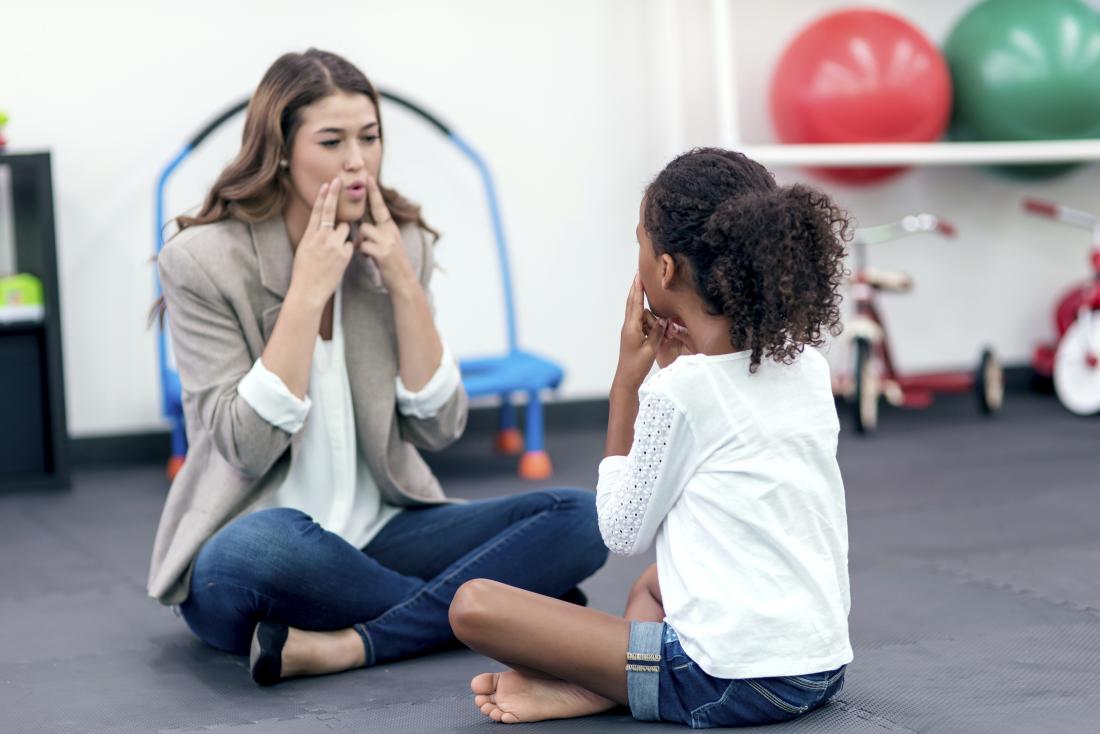For example, a person with apraxia may be unable to tie their shoelaces or button up a shirt. People with apraxia of speech find it challenging to talk and express themselves through speech.
In this article, learn more about the causes and symptoms of apraxia, as well as the treatment options.
Causes

Head trauma, stroke, and dementia are all possible causes of apraxia.
Apraxia happens when certain regions of the cerebral hemispheres in the brain do not work properly.
This dysfunction may occur if a lesion in the brain forms across the neural pathways that store memories of learned movements. A person with apraxia may be unable to access this information.
Apraxia can happen due to a head injury or disease that affects the brain, such as:
Apraxia is more common in older adults due to the higher incidence of neurological diseases, such as stroke and dementia, among this population. If people have apraxia due to swelling from a stroke, it might improve within a few weeks.
Apraxia can also be a genetic disorder. If an infant has apraxia at birth, it may be due to problems involving the central nervous system.
Symptoms
The main symptom of apraxia is an inability to carry out simple movements, even though a person with apraxia has full use of their body and understands commands to move.
People with apraxia may find it difficult to control or coordinate movements voluntarily. These individuals may also have brain damage that causes aphasia, a language impairment that reduces the ability to understand or use words correctly.
Types
Different types of apraxia affect the body in slightly different ways:
Limb-kinetic apraxia
People with limb-kinetic apraxia are unable to use a finger, arm, or leg to make precise and coordinated movements. Although people with limb-kinetic apraxia may understand how to use a tool, such as a screwdriver, and may have used it in the past, they are now unable to carry out the same movement.
Ideomotor apraxia
People with ideomotor apraxia are unable to follow a verbal command to copy the movements of others or follow suggestions for movements.
Conceptual apraxia
This form of apraxia is similar to ideomotor apraxia. People with conceptual apraxia are also unable to perform tasks that involve more than one step.
Ideational apraxia
People with ideational apraxia are unable to plan a particular movement. They may find it hard to follow a sequence of movements, such as getting dressed or bathing.
Buccofacial apraxia
People with buccofacial apraxia, or facial-oral apraxia, are unable to make movements with the face and lips on command.
Constructional apraxia
People with constructional apraxia are unable to copy, draw, or construct basic diagrams or figures.
Oculomotor apraxia
Oculomotor apraxia affects the eyes. People with this type of apraxia have difficulty making eye movements on command.
Verbal apraxia
People with verbal or oral apraxia find it challenging to make the movements necessary for speech. They may have problems producing sounds and understanding rhythms of speech.
Apraxia vs. aphasia vs. dyspraxia

A person with aphasia may find it hard to compose and understand sentences.
The symptoms of apraxia can be similar to those of two other conditions called aphasia and dyspraxia.
Aphasia usually results from damage to part of the brain called the cerebral cortex. Specific parts of the cerebral cortex called Broca’s area and Wernicke’s area are responsible for understanding and producing language.
People with aphasia may have difficulty:
- finding the right words to express themselves
- reading and writing sentences
- understanding words and grammar
Dyspraxia is a mild form of apraxia that people sometimes refer to as developmental coordination disorder. It reduces a person’s ability to do some physical movements, and it may also affect speech.
People with dyspraxia may have the following symptoms:
- difficulty with balance
- clumsiness
- vision problems
- emotional or behavioral difficulties
- problems with social skills
- difficulty reading, writing, and speaking
- memory problems
Diagnosis and tests
To diagnose apraxia, a doctor will look at a person’s full medical history and consider all of their symptoms to identify any underlying causes. They may also be looking to rule out similar conditions, such as motor weakness, aphasia, or dyspraxia.
A doctor may carry out a variety of tests to assess:
- verbal and nonverbal communication
- how people participate and function in certain activities
- coordination
- hearing and listening abilities
Tests may include both physical tests to measure motor coordination skills and language tests to check the ability to understand commands.
Treatment
If people have apraxia due to an underlying health condition, they will receive treatment for the condition that is causing apraxia.
Physical and occupational therapy may help improve symptoms. These therapies might include:
- developing sounds through repetition and practicing accompanying movements
- working on speech rhythms using a metronome or finger clicking
- learning to use pen and paper or a computer to express themselves
Regular one-to-one sessions with a speech therapist can help people improve the symptoms of apraxia of speech. Techniques may include:
- learning how to move the mouth muscles to make certain sounds
- learning sign language, for those who have severe difficulty with speech
- using all of the senses to help with speech, for example, listening to recorded sounds and using a mirror to see how the mouth is making sounds
Management

Speech therapy may help improve the lives of people living with apraxia.
Children or adults with apraxia will need to manage the disorder throughout their life.
Special education programs and physical, speech, and occupational therapy can all help people learn to live more easily with apraxia.
People with severe forms of apraxia may not be able to live independently and may require assistance from others to carry out everyday tasks.
Outlook
The outlook for people with apraxia will vary depending on their individual circumstances. If a person has apraxia due to a stroke or another neurological disorder, treatment for this condition may help reduce or resolve apraxia symptoms.
According to the National Institute of Neurological Disorders and Stroke, some people’s apraxia symptoms will get significantly better over time, while others may experience less improvement. Some people continue to improve over several years or even decades.
With the right support from loved ones, schools, or colleagues, people with apraxia can also learn to manage their condition.
